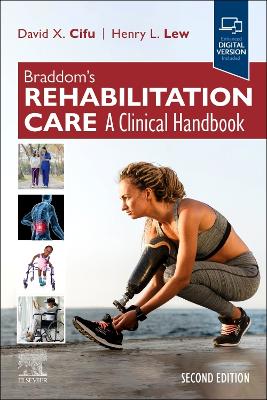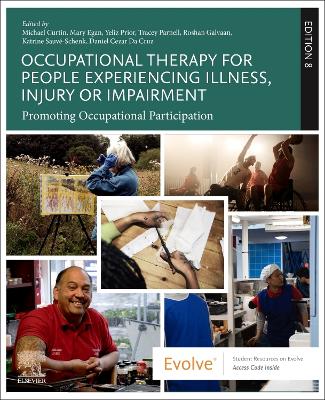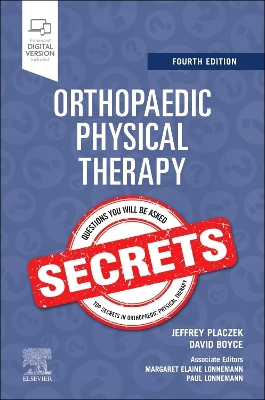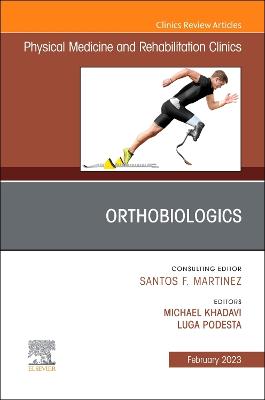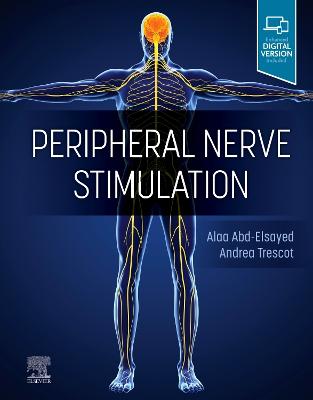Spinal Cord Injury
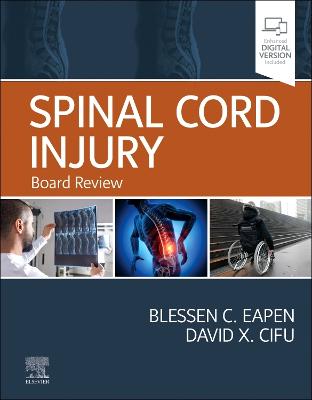 -10%
portes grátis
-10%
portes grátis
Spinal Cord Injury
Board Review
Eapen, Blessen C.; Cifu, David
Elsevier - Health Sciences Division
11/2022
400
Dura
Inglês
9780323833899
15 a 20 dias
450
Descrição não disponível.
Table of Contents - to be finalised
Questions included with each chapter
Chapter 1: Introduction to the Spinal Cord Injury Boards
Chapter 2: Epidemiology, Risk Factors, and Prevention of SCI
Chapter 3: Anatomy and Imaging of the Spinal Cord
Chapter 4: Assessment, Classification and Prognosis of Spinal Cord Injury
Chapter 5: Acute Evaluation and Management of Spinal Cord Injury
Chapter 6: Cardiovascular Issues in Spinal Cord Injury
Chapter 7: Pulmonary Issues in Spinal Cord Injury
Chapter 8: Gastrointestinal Issues in Spinal Cord Injury
Chapter 9: Genitourinary Issues in Spinal Cord Injury
Chapter 10: Sexual and Reproductive Health in Spinal Cord Injury
Chapter 11: Musculoskeletal Issues in Spinal Cord Injury
Chapter 12: Neurological Complications of Spinal Cord Injury
Chapter 13: Pressure Injuries
Chapter 14: Pain in Spinal Cord Injury
Chapter 15: Nutrition, Endocrine and Immune Function in Spinal Cord Injury
Chapter 16: Psychological Disorders in Spinal Cord Injury
Chapter 17: Rehabilitation in Spinal Cord Injury
(reflecting the current board distribution of 10% of the exam being on these topics).
Includes functional assessment, exercise and modalities (therapeutic exercise, functional estim, modalities, non-traditional therapies), mobility (gait, ambulation/lower extremity orthoses, wheelchairs/other mobility devices, transfers, positioning, and sitting balance), ADLs (adaptive equipment/functional orthosis, architectural adaptations, tendon transfers, environmental control technology), and speech and communication
Chapter 18: Miscellaneous Topics in Spinal Cord Injury
Includes participation/living with SCI (recreation and sports, community access and driving, vocational rehabilitation, social issues), healthcare systems (rehabilitation team, patient safety, medico-legal issues, advocacy, practice management), clinical and basic science (research and statistical methods, neural injury/regeneration), spinal orthosis, ethics and professionalism, and electrodiagnostic assessment.
Questions included with each chapter
Chapter 1: Introduction to the Spinal Cord Injury Boards
Chapter 2: Epidemiology, Risk Factors, and Prevention of SCI
Chapter 3: Anatomy and Imaging of the Spinal Cord
Chapter 4: Assessment, Classification and Prognosis of Spinal Cord Injury
Chapter 5: Acute Evaluation and Management of Spinal Cord Injury
Chapter 6: Cardiovascular Issues in Spinal Cord Injury
Chapter 7: Pulmonary Issues in Spinal Cord Injury
Chapter 8: Gastrointestinal Issues in Spinal Cord Injury
Chapter 9: Genitourinary Issues in Spinal Cord Injury
Chapter 10: Sexual and Reproductive Health in Spinal Cord Injury
Chapter 11: Musculoskeletal Issues in Spinal Cord Injury
Chapter 12: Neurological Complications of Spinal Cord Injury
Chapter 13: Pressure Injuries
Chapter 14: Pain in Spinal Cord Injury
Chapter 15: Nutrition, Endocrine and Immune Function in Spinal Cord Injury
Chapter 16: Psychological Disorders in Spinal Cord Injury
Chapter 17: Rehabilitation in Spinal Cord Injury
(reflecting the current board distribution of 10% of the exam being on these topics).
Includes functional assessment, exercise and modalities (therapeutic exercise, functional estim, modalities, non-traditional therapies), mobility (gait, ambulation/lower extremity orthoses, wheelchairs/other mobility devices, transfers, positioning, and sitting balance), ADLs (adaptive equipment/functional orthosis, architectural adaptations, tendon transfers, environmental control technology), and speech and communication
Chapter 18: Miscellaneous Topics in Spinal Cord Injury
Includes participation/living with SCI (recreation and sports, community access and driving, vocational rehabilitation, social issues), healthcare systems (rehabilitation team, patient safety, medico-legal issues, advocacy, practice management), clinical and basic science (research and statistical methods, neural injury/regeneration), spinal orthosis, ethics and professionalism, and electrodiagnostic assessment.
Este título pertence ao(s) assunto(s) indicados(s). Para ver outros títulos clique no assunto desejado.
Table of Contents - to be finalised
Questions included with each chapter
Chapter 1: Introduction to the Spinal Cord Injury Boards
Chapter 2: Epidemiology, Risk Factors, and Prevention of SCI
Chapter 3: Anatomy and Imaging of the Spinal Cord
Chapter 4: Assessment, Classification and Prognosis of Spinal Cord Injury
Chapter 5: Acute Evaluation and Management of Spinal Cord Injury
Chapter 6: Cardiovascular Issues in Spinal Cord Injury
Chapter 7: Pulmonary Issues in Spinal Cord Injury
Chapter 8: Gastrointestinal Issues in Spinal Cord Injury
Chapter 9: Genitourinary Issues in Spinal Cord Injury
Chapter 10: Sexual and Reproductive Health in Spinal Cord Injury
Chapter 11: Musculoskeletal Issues in Spinal Cord Injury
Chapter 12: Neurological Complications of Spinal Cord Injury
Chapter 13: Pressure Injuries
Chapter 14: Pain in Spinal Cord Injury
Chapter 15: Nutrition, Endocrine and Immune Function in Spinal Cord Injury
Chapter 16: Psychological Disorders in Spinal Cord Injury
Chapter 17: Rehabilitation in Spinal Cord Injury
(reflecting the current board distribution of 10% of the exam being on these topics).
Includes functional assessment, exercise and modalities (therapeutic exercise, functional estim, modalities, non-traditional therapies), mobility (gait, ambulation/lower extremity orthoses, wheelchairs/other mobility devices, transfers, positioning, and sitting balance), ADLs (adaptive equipment/functional orthosis, architectural adaptations, tendon transfers, environmental control technology), and speech and communication
Chapter 18: Miscellaneous Topics in Spinal Cord Injury
Includes participation/living with SCI (recreation and sports, community access and driving, vocational rehabilitation, social issues), healthcare systems (rehabilitation team, patient safety, medico-legal issues, advocacy, practice management), clinical and basic science (research and statistical methods, neural injury/regeneration), spinal orthosis, ethics and professionalism, and electrodiagnostic assessment.
Questions included with each chapter
Chapter 1: Introduction to the Spinal Cord Injury Boards
Chapter 2: Epidemiology, Risk Factors, and Prevention of SCI
Chapter 3: Anatomy and Imaging of the Spinal Cord
Chapter 4: Assessment, Classification and Prognosis of Spinal Cord Injury
Chapter 5: Acute Evaluation and Management of Spinal Cord Injury
Chapter 6: Cardiovascular Issues in Spinal Cord Injury
Chapter 7: Pulmonary Issues in Spinal Cord Injury
Chapter 8: Gastrointestinal Issues in Spinal Cord Injury
Chapter 9: Genitourinary Issues in Spinal Cord Injury
Chapter 10: Sexual and Reproductive Health in Spinal Cord Injury
Chapter 11: Musculoskeletal Issues in Spinal Cord Injury
Chapter 12: Neurological Complications of Spinal Cord Injury
Chapter 13: Pressure Injuries
Chapter 14: Pain in Spinal Cord Injury
Chapter 15: Nutrition, Endocrine and Immune Function in Spinal Cord Injury
Chapter 16: Psychological Disorders in Spinal Cord Injury
Chapter 17: Rehabilitation in Spinal Cord Injury
(reflecting the current board distribution of 10% of the exam being on these topics).
Includes functional assessment, exercise and modalities (therapeutic exercise, functional estim, modalities, non-traditional therapies), mobility (gait, ambulation/lower extremity orthoses, wheelchairs/other mobility devices, transfers, positioning, and sitting balance), ADLs (adaptive equipment/functional orthosis, architectural adaptations, tendon transfers, environmental control technology), and speech and communication
Chapter 18: Miscellaneous Topics in Spinal Cord Injury
Includes participation/living with SCI (recreation and sports, community access and driving, vocational rehabilitation, social issues), healthcare systems (rehabilitation team, patient safety, medico-legal issues, advocacy, practice management), clinical and basic science (research and statistical methods, neural injury/regeneration), spinal orthosis, ethics and professionalism, and electrodiagnostic assessment.
Este título pertence ao(s) assunto(s) indicados(s). Para ver outros títulos clique no assunto desejado.

